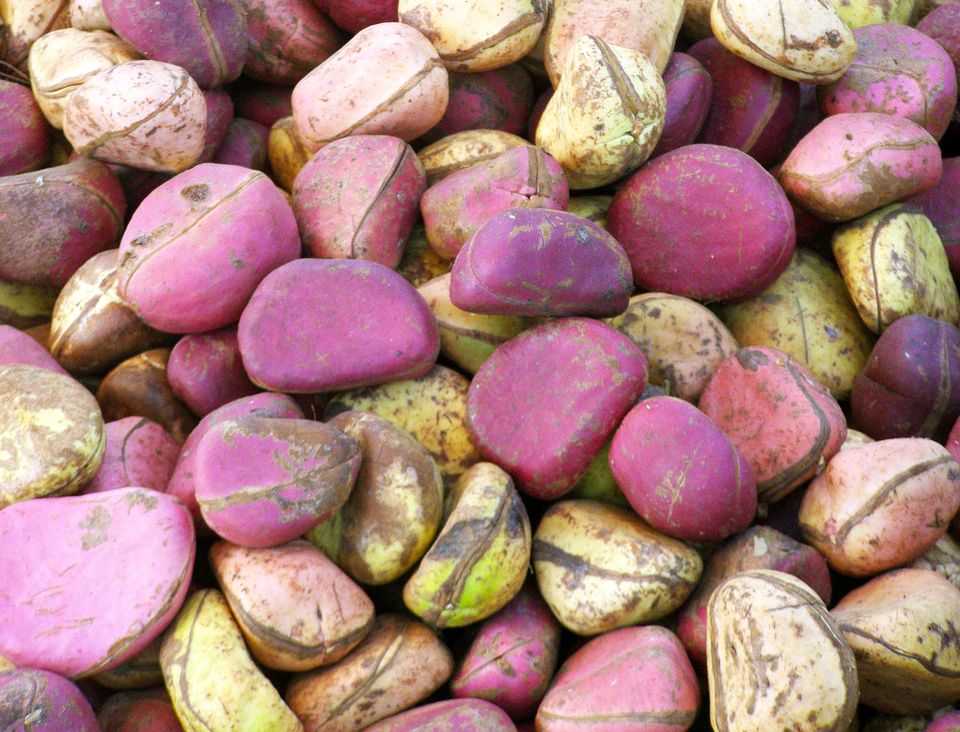Synonyms:
Cola, Kola Nut, Colae Semina, Goro Nuts
Botanical source:
Cola seeds are obtained from Cola vera Sch., a large handsome tree of the family Sterculiaceae.
Geographical source:
The plant is indigenous to tropical African countries and is cultivated in other tropical countries West Indies, Brazil and Java.

Description:
Fresh Cola seeds, as commonly eaten in African countries, are somewhat flattened, plano-convex or biconvex and oval or rounded in shape with a green or greenish purple external colour and a pale or dull white internal colour. They consist of two distinct tightly closed or partially opened cotyledons, which are easily separable. They are about 2 to 5 cm long about 2 to 3 cm broad and about 1 to 2 cm thick. The dried seeds have a dull dark brown or reddish brown external colour, and are hard and solid in texture. A shallow furrow encircles the kernel where the two cotyledons meet. Fresh Cola seeds have a bitterish astringent taste and no distinct odour.
Chemical Constituents:
The principal constituent of Cola seed is caffeine (1 -2.5 percent). Other constituents include a crystalline compound, kolatin (0. 75 percent), traces of theobromine, and oxidase enzyme, fat, sugar and abundant starch.
Uses of Cola Seeds:
Cola seeds are commonly eaten raw as a nerve stimulant for its stimulating properties similar to those of tea and coffee. They are also found to increase the energy of the cardiac contractions.
Substitutes and Adulterants:
Seeds of other Cola species, notably C. acuminata, C. ballayi C. astrophora, C. alba and C. mlida have been used as substitutes and adulterants of Cola seed.
